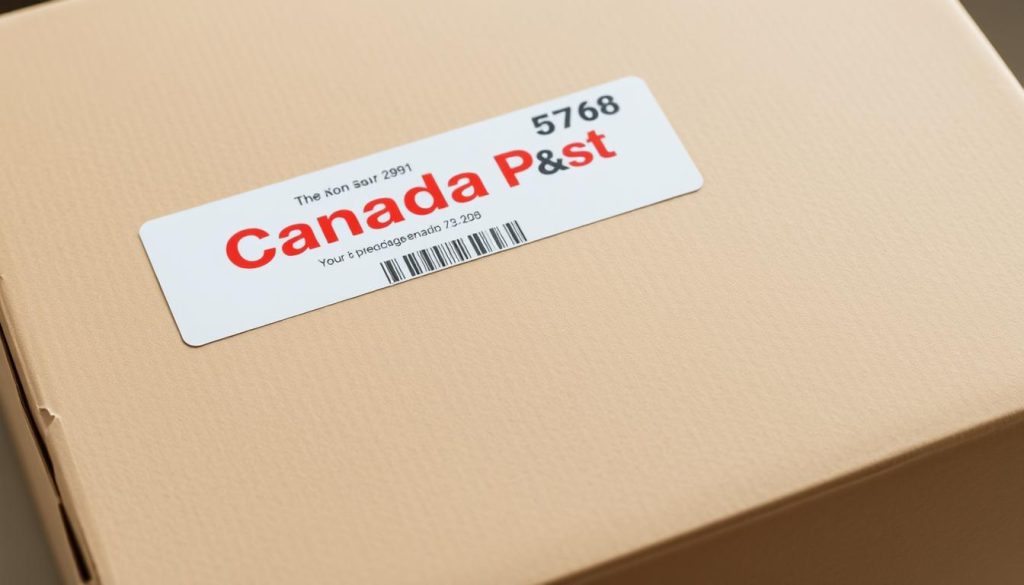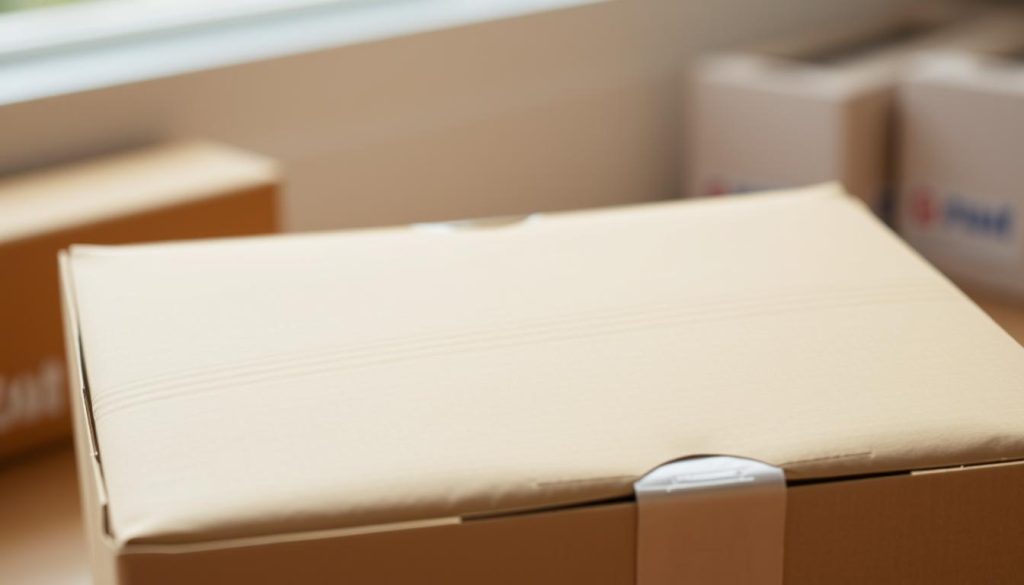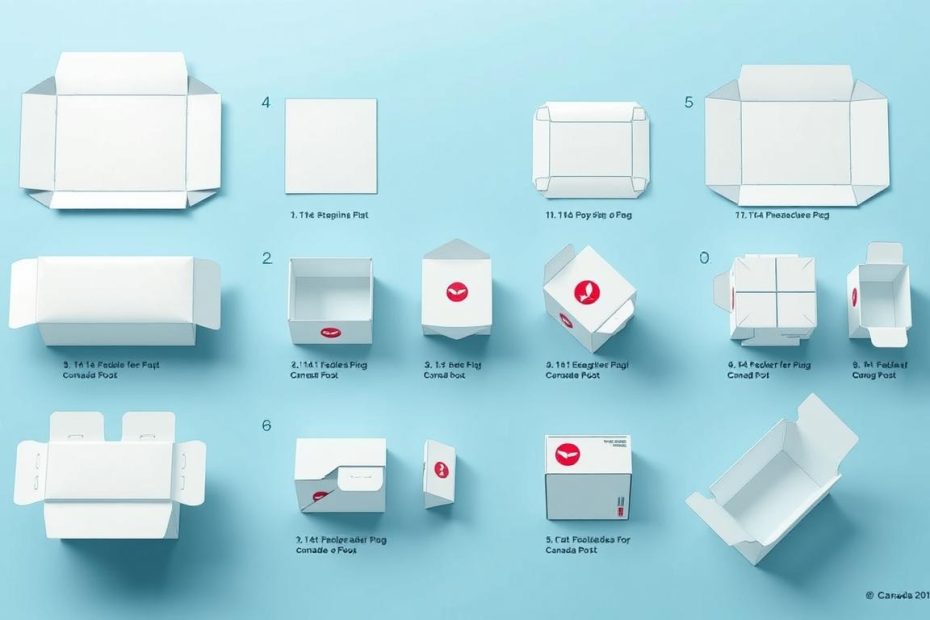Ever wonder why some packages arrive without a scratch? It’s because they were folded with care. Learning how to fold a Canada Post box is key.
Shipping can be hard, but knowing how to assemble a Canada Post box helps a lot. Canada Post says to pick a strong cardboard box. This keeps your items safe when they’re sent.
How you pack your items matters a lot. A well-made box keeps things safe, saves money, and makes sure your items get there okay. This guide will show you how to make a package that looks and feels professional.
Key Takeaways
- Proper box folding protects items during shipping
- Corrugated cardboard provides optimal protection
- Correct assembly reduces shipping risks
- Understanding box folding saves time and money
- Professional packaging increases delivery success
Understanding Canada Post Boxes
When you ship packages, picking the right box is key. Canada Post has many box types to help you pack well. This ensures your items get to their destination safely.
It’s important to know about the different boxes for shipping. The canada post flat rate box folding guide helps you choose and prepare your boxes.
Exploring Box Varieties
- Regular Cardboard Boxes
- Flat-Rate Shipping Containers
- Specialty Packaging Options
Box Size Considerations
| Box Type | Typical Dimensions | Best Use |
|---|---|---|
| Small Flat Rate | 10″ x 7″ x 4″ | Documents, Small Electronics |
| Medium Flat Rate | 13″ x 11″ x 7″ | Clothing, Books, Gifts |
| Large Flat Rate | 16″ x 14″ x 10″ | Larger Items, Multiple Objects |
Choosing the right box is vital for a successful shipment. Choosing wisely prevents damage and saves money. Always measure your items first. Then pick a box that protects them well without using too much space.
Preparing Your Workspace
Setting up a good workspace is key when working with flat-pack Canada Post boxes. The right spot makes the assembly steps easier and more fun.
Your workspace should be clean and well-lit. It should also have enough room to move around. A flat, strong surface like a big table or a clean floor is best for these boxes.
Essential Workspace Considerations
- Choose a space with good lighting
- Ensure a flat, clean surface
- Have enough room to spread out materials
- Keep workspace free from cluttered distructions
Tools You’ll Need
| Tool | Purpose |
|---|---|
| Sharp scissors | Precise cutting if needed |
| Packing tape | Securing box edges |
| Ruler or measuring tape | Ensuring accurate folds |
| Clean cloth or paper towels | Wiping surface or box |
Pro tip: When working with many boxes, stack them neatly. Fold one at a time to stay organized and precise.
Inspecting Your Canada Post Box
Before you start to fold your Canada Post box, check it first. This step can help avoid shipping problems later.
https://www.youtube.com/watch?v=Pm5Qit6Wi-4
Start by looking at the box carefully. Make sure it’s strong enough to carry your items safely.
Checking for Damage
Look for damage before you fold your box. Here are some things to watch for:
- Visible tears or punctures
- Weakened cardboard edges
- Water stains or moisture damage
- Creases that might compromises structural integrity
Understanding Box Components
Know what parts your box has:
| Box Component | Purpose | Inspection Focus |
|---|---|---|
| Bottom Flaps | Provide Base Stability | Check for Clean Folds |
| Side Walls | Maintain Package Shape | Ensure No Structural Weakness |
| Top Flaps | Secure Package Closure | Verify Smooth Closing Mechanism |
If you’re unsure about your box, get a new one. Your package’s journey depends on its initial preparation.
Step-by-Step Folding Instructions
Getting a Canada Post box ready for shipping needs focus. Knowing how to fold it right saves time and keeps your package safe. This guide will show you how to make a strong, neat package.
First, make sure you have a clean, flat area. Also, the box should be in good shape. Folding might seem hard at first, but you’ll get better with practice.
Flattening the Box Foundation
Start by laying the box flat. Look for the natural fold lines to guide you. These lines help make a strong, secure box.
- Find all fold lines on the box
- Smooth out any creases or wrinkles
- Make sure the box surface is clean and dry
Mastering the Side Folds
When folding the sides, focus on the crease lines. Gentle but firm pressure makes clean folds. These folds support your package well.
- Start with the longest side folds
- Align edges precisely
- Press down firmly along each fold
Securing the Bottom Flaps
The bottom of your Canada Post box needs extra care. Interlocking the bottom flaps makes a strong base. This base can handle typical shipping conditions.
- Fold interior flaps first
- Cross-fold exterior flaps for maximum stability
- Check that all edges are tucked in neatly
Ensuring Structural Integrity
Packaging canada post boxes right is key. You must focus on making the box strong. This keeps your stuff safe while it’s moving.
When you put your box together, make it strong. This helps it handle the trip better. It keeps your package safe.
Reinforcing the Bottom of the Box
The box’s bottom takes the most weight. To make it strong, do these things:
- Use strong packing tape that’s at least 2 inches wide
- Put tape in an H-pattern on the box seams
- Make sure tape edges overlap by half an inch
- Use lots of tape for heavy things
Stability Verification Test
Shippers say to do a simple test. It checks if your box can handle the trip:
| Test Method | Verification Criteria |
|---|---|
| Drop Test | Gently drop box from 1 meter onto hard surface |
| Shake Test | Carefully shake box to check if things are secure inside |
| Weight Distribution | Make sure heavy things are in the middle and safe |
Pro tip: If your box passes these tests, it’s ready to ship!
Labeling Your Box
Proper labeling is key when you’re getting ready to ship your package. The label is like a passport for your box. It helps it get where it needs to go.

When you’re putting together your shipping box, pay close attention to the label. It’s not just for the address. It’s your box’s ticket through the postal system.
Importance of Clear Labels
Clear labels help avoid problems and delays. Here are some tips for making a good label:
- Use white, unglossed paper for printing labels
- Ensure printer ink is dark and fully saturated
- Print labels in high resolution
- Verify all recipient information is accurate
Best Practices for Labeling
Here’s how to make a label that’s easy to read:
- Affix the label on the largest, flattest side of the box
- Avoid placing the label on box seams or edges
- Ensure the label lies completely flat without wrinkles
- Cover any previous shipping markings
Pro tip: Always double-check your label before sealing the box to prevent possible shipping errors.
Using Packing Materials
Packaging Canada Post boxes right means picking the right materials. The right packing keeps your items safe on their way.
Getting your items ready for shipping is key. The canada post flat rate box guide shows how to pack well.
Selecting Protective Materials
What you pack with depends on how fragile your item is and how far it’s going. Here are some good choices:
- Bubble wrap for delicate items
- Packing peanuts for filling empty spaces
- Air pillows for lightweight protection
- Kraft paper for wrapping irregular shapes
Protecting Your Items Effectively
To make sure your package gets there okay, do these things:
- Wrap fragile items individually
- Use enough cushioning material
- Fill empty spaces to prevent movement
- Make a tight, secure package
| Packing Material | Best For | Protection Level |
|---|---|---|
| Bubble Wrap | Breakable items | High |
| Packing Peanuts | Filling box gaps | Medium |
| Air Pillows | Lightweight items | Medium-Low |
Pro tip: Always choose eco-friendly packing materials when possible to reduce environmental impact.
Navigating Canada Post Guidelines
Shipping with Canada Post needs careful attention to detailed guidelines. Proper canada post box preparation tips can help you avoid shipping problems. This ensures your package reaches its destination smoothly.
When preparing your canada post expedited parcel box folding, knowing key shipping restrictions is important. Canada Post has specific requirements for every sender. These ensure successful delivery.
Critical Shipping Restrictions to Know
Before shipping your package, consider these essential guidelines:
- Maximum weight limit is 30 kg (66 lbs)
- Packages over this weight will cost more
- Certain items can’t be shipped
Ensuring Package Compliance
To meet Canada Post requirements, you should:
- Measure and weigh your package carefully
- Check the list of items you can’t ship
- Make sure your box is sealed right
- Use the right packing materials
Pay special attention to packaging details. This prevents shipping delays and unexpected fees. Always check Canada Post’s official website for the latest shipping rules.
Closing Your Box Properly
Getting your Canada Post shipping box ready for shipping is very important. The last steps in packing can really help your items get to their new home safely. It’s key to know how to fold and seal your box right for a good shipping experience.

When you’re done with your canada post shipping box, pay attention to these important steps:
- Make sure all box flaps are flat and line up
- Use strong packing tape for safety
- Put tape on all box seams and edges
Finalizing the Box Flaps
First, check that your box flaps are smooth and flat. Press them down hard to seal them well. For extra strength, use the H-taping method. This means putting tape across the box’s middle and then on both sides, making an H shape.
Sealing with Tape
Choose a packing tape that can handle shipping well. It should be at least 2 inches wide. When you seal, make sure to overlap tape edges by half an inch to avoid openings. Press the tape down evenly to make a strong seal that will protect your items on their way.
- Use clear or brown packing tape
- Avoid using masking tape or scotch tape
- Put tape on smoothly without wrinkles
By following these steps, you’ll make a package that meets shipping standards and keeps your items safe.
Preparing for Pickup or Drop-off
After you finish assembling your canada post box, you’re all set to send your package. You can ship a small packet box or a bigger parcel. Canada Post has many ways to get your item to its new home.
Choosing the right shipping method saves time and keeps your package safe. You have many options for sending your folding canada post small packet box.
Locating Your Nearest Canada Post Location
Finding a Canada Post location near you is easy. Here’s how to find a drop-off spot:
- Visit the official Canada Post website
- Use the online location finder tool
- Check mobile apps for nearest postal locations
- Call local customer service for assistance
Scheduling a Convenient Pickup
If you can’t go to a post office, Canada Post has a pickup service. It comes to your door:
| Pickup Option | Details |
|---|---|
| Home Pickup | Schedule online or by phone |
| Business Pickup | Regular scheduled collections available |
| Prepaid Shipping | Use street letter boxes for small packets |
Pro tip: Make sure your package fits Canada Post’s rules before you schedule a pickup. Proper preparation prevents shipping delays.
So, whether you drop it off or have it picked up, your canada post small packet box is on its way!
Tracking Your Shipment
After sending your Canada Post expedited parcel, tracking is key for a smooth delivery. Knowing how to track your package lets you follow its journey from start to end.
When you prepare your Canada Post box, you get a special tracking number. This number lets you watch your package’s progress. You’ll get updates on where it is and when it will arrive.
How to Track Your Package
Tracking your Canada Post shipment is easy. You can follow your package in a few ways:
- Visit the official Canada Post website
- Use the Canada Post mobile app
- Call customer service with your tracking number
Understanding Tracking Updates
Canada Post gives you updates on your package’s status. Here’s what each update means:
- Processed: Package has been received and entered into the system
- In Transit: Package is moving through postal facilities
- Out for Delivery: Package is on the delivery vehicle
- Delivered: Package has reached its destination
By using these tracking methods, you can make sure your package goes smoothly through Canada Post.
Troubleshooting Common Issues
Flat-pack Canada Post boxes can sometimes cause trouble. Even the most careful packers might face unexpected problems. Knowing how to fix these issues can save you time and avoid shipping delays.
If your box isn’t secure after you’ve put it together, it’s best to start over. Check the box for any weak spots. Look for creases or tears that could make the box break during shipping.
Resolving Box Security Problems
If your box feels unstable, don’t ship it. Use a new flat-pack Canada Post box instead. Make sure all folds are correct and the seal is tight. If you’re not sure, add extra tape to the seams.
Managing Label Errors
Label mistakes can happen to anyone. If your label has wrong info, call Canada Post customer service right away. They can help you make a new label. Always check your package details before you ship it to avoid problems.
